Fishing for the Angler: A Complete Guide to Spots, Equipment, and Bait for Multiplying Your Hooks
A red-beamed headlamp cuts through the darkness, the line slides silently between the guides, and the float disappears under a flash of silver. Those who were there know that the Oblada melanura , shy during the day and bold at dawn, rewards only those who come prepared. With a few tricks—a thinner line, groundbait dosed to the gram—you can transform an ordinary outing into a series of close strikes.
This guide will take you step by step: from the most profitable weather patterns to choosing the right hooks, from light spinning to long-distance surfcasting. By the end, you'll have a battle plan ready to put into practice tomorrow, with a good chance of seeing your landing net fill up faster than usual.
When and where to find sea bream: seasons, times, and winning spots
If you want to encounter compact schools, you need to be in the right place at the right time. Sea bream aren't ghosts; they simply follow regular cycles of light, current, and plankton availability. Knowing these rhythms is the first competitive advantage.
Ideal sea weather and the influence of the moon
The sea, slightly slack, left over from a storm two days earlier, is pure gold. The suspended particles cloud the water just enough to make the school feel safe, without compromising the visibility of the bait. Add a moderate offshore wind: it pushes the small fish inshore and carries the scent of your bait beyond the surf. At dusk, with a waxing or full moon, you'll notice frantic movements on the float. The explanation is biological: the increase in nighttime light activates the phototropism of surface prey, which in turn stimulates the eyeballs. However, when the moon is new and it's pitch dark, it's best to postpone the session until first light; then you'll be there before the school leaves their shelters.
How to read cliffs, ports and Posidonia oceanica meadows
Natural reef or artificial breakwater, it doesn't matter: observe the succession of steps. Sea bream patrol the first depth drop, between 2 and 5 meters, ready to head out to sea if disturbed. In ports, they exploit the shade of the piers, where the service lights attract plankton. In clear water, follow the line between the light-colored sand and the dark seagrass strips: this is their highway. A light bait, released right on the edge, can stop an entire school for over half an hour. Learn to identify the micro-current that laps the edge of the reef: your bait should drift in that exact corridor.
Essential setup: rods, reels, lines and terminals that make the difference
The tackle doesn't have to be expensive, but it should be consistent with the average size of 200 grams and the almost still water you're fishing in. Every gram saved on lead weight means an additional bite.
Light configurations (floating/Bolognese)
A 5-meter Bolognese rod, with a 5–20 g action, covers 90% of coastal scenarios. Pair it with a 2500-size reel with a fast gear ratio (≥5.1:1) for rapid recovery after the strike, before the fish slips between the rocks. The spooled monofilament can be a good-quality 0.20 mm; the 0.22 fluorocarbon leader, at least 1.5 meters long, reduces glare and knots. Size 10 eagle beak hooks drive firmly yet remain invisible. On the float, keep it light: a 1 g feather in still water, a 1.5 g drop in a light current. Use staggered weights—70% of the weight near the float, the rest in micro-shot up to 15 cm from the hook—for a slow, natural cast.
Power configurations (distance surfcasting)
When the school of sea bream stays beyond 40 m, power is needed. This is where a 4 m carbon rod comes into play, casting 120–150 g, paired with a 6000–8000 reel with a 4.8–5.2:1 ratio. Load it with 0.8 PE braid, a tapered shock leader, and a 0.28 mm fluorocarbon leader. The 70–100 cm long-arm rig, optionally equipped with a floater if the bottom is mixed, keeps the bait in a column exactly where the sea bream are patrolling. A 75 g lead is sufficient to cut through the wind without making the presentation stiff.
Natural baits, artificial baits and groundbaits: what really works for sea bream
The sea bream likes a strong, yet not too bloody, flavor. Worms, mollusks, and small fish make up its staple diet; therefore, an effective bait must elicit these flavors and move lively.
Top live baits and how to bait them
The Korean worm reigns supreme in terms of resistance and sinuous motion: thread it a third of the way through, leaving two segments free, to produce irresistible vibrations. The sandworm, more delicate but with a mud-like scent, should be cut into 2-cm pieces to branch out the scents. The tremolina works in cold water: half a worm on a #12 hook is enough for a flurry of catches. If you prefer schooling bait, salted peeled shrimp and thinly sliced sardine fillets are excellent alternatives. Remember to cover the barb: sea bream are suspicious and will spit out anything that stings.
Mini-hardbaits and micro-jigs effective in spinning
For ultralight spinning, 5–7 cm mini-minnows, anchovy or transparent in color, imitate juvenile horse mackerel patrolling the surface. Unpredictable jerk-pauses , with rapid flashes of the lip, simulate injured minnows and trigger chases. At depths beyond 5 m, switch to 10–15 g micro-jigs: cast beyond the school, let it sink for three seconds, and then animate with tight taps of the tip. The metallic flash attracts even from afar; strike as soon as you feel the sharp strike, without waiting.
Shore techniques: float, Bolognese, and surfcasting, step by step.
Whether you're sight fishing under the marina or casting out into the surf, the goal is always the same: to present the bait at depths of 1–3 m as naturally as possible. Here's how.
Illustrated frames and sensitive leads
With a Bolognese rod, use a sliding float: rubber stopper, knot-saving beads, a micro swivel, and a fluorocarbon leader. Space five #8 sinkers 10 cm apart; a 5 g torpedo positioned 40 cm above the swivel stabilizes the rig. If you're surfcasting, build a long-arm with a thin arm: on a sandy bottom, 0.22 mm is sufficient; on rocky bottoms, increase to 0.26 mm. Add a flotter if the bottom is dirty; it will keep the bait visible, raised 15 cm.
Via ferrata timing and fight management
The first thrust of the float is for probing; the second, more decisive one, is the moment to strike. Raise the rod 60 degrees with a sharp jerk, retrieve two quick turns, and then move on to gentle pumps: the sea bream isn't a tuna, but it can still find its way into the hole with a thin line. When surfcasting, keep the rod high to prevent the fish from using the lead as leverage. Upon reaching the point, guide the fish toward the fine-meshed landing net; this will prevent the small scale from snagging and causing tearing.
Boat techniques: light drifting and spinning in the current
From the boat, you change perspective: you're no longer tied to the shoreline and can chase the school in depths of 15–25 m. Two strategies stand out for their effort-to-result ratio.
Drifting setup with feeder
Still light or simply with the engine idling, set a keel parallel to the reef. Throw a net feeder filled with ground sardines mixed with dry breadcrumbs from the stern: it will slowly empty, forming a compact cloud. With a 3m rod and a 4000mm reel, slide the 2m line into the wake. Lead is unnecessary: the bait itself acts as a guide. Retrieve every five minutes, check the bait, and verify that the net hasn't emptied completely. When you hear the faint "tick-tick," don't rush: the bream is nibbling; wait for the steady pull before tightening the drag.
Vertical recovery strategies
During the midday hours, pay attention to the current channel between two rocky points. Using a silver micro-jig, descend to a depth of 6 m, then animate the lure with 30 cm lifts followed by a free fall. The strike almost always occurs on the descent: you'll feel a sharp tap, like a micro-snag. At that point, strike firmly and keep the jig under constant tension; a slack line causes strain and unhooking. If the school is large, be prepared to double-tackle: troll the first fish slowly, while the others will follow, threatening the second hook of the sabiki.
Common mistakes and extra tips from pros to increase strikes and hooks
Small details separate a mediocre evening from a string of great bites. Here are the choices that veterans obsessively repeat.
Calibrate the bait without satiating the flock
Add groundbait in 30g handfuls every ten casts, no more. Too much groundbait fills the sea bream's stomachs, which stop them from searching for your hook. Chop the sardines with dry bread and a handful of sand: it sinks faster, holds together, and is gradually dispersed by the school's tail thrashings. If after fifteen minutes you don't get any hits, change the grain size: larger pieces create a vertical column that attracts fish even from the bottom.
Reducing mistrust with invisible terminals
There's no cheating with visible lines: leaders over 0.30 mm are equivalent to "no strike." Use mid-range Japanese fluorocarbon, 0.22–0.25 mm: a compromise between invisibility and strength. At night, you can go down to 0.20, but carry a spare roll—a sharp swath of seagrass is enough to damage it. Hooks that are too large are another own goal: if you see prey approaching, immediately replace them with a size 12, or even better, a size 14 if the fish is small.
Rules, ethics of harvesting and fish care: fishing today to fish tomorrow
Fishing responsibly means returning the resource to the sea so it can continue to provide excitement. In many regions, a FIPSAS license is required for recreational sea fishing; download it to your phone and avoid hefty fines. The minimum size of 15 cm is not a pro forma requirement: smaller individuals have not yet completed their first reproductive cycle. Limit your bag to what you will consume fresh within 24 hours, and if fishing from high cliffs, use a deep landing net to prevent the fish from hitting the rocks. A sharp tap on the back of the head or an oxygenated nursery tank can make the difference between premium quality meat and waste.
Operational recap and quick checklist to save on your phone before you go
You've mastered tactics, equipment, and timing. Before packing your backpack, review this list and you'll set out with a clear idea.
- ✔️ Check the weather: light sea, land breeze, waxing moon.
- ✔️ 5m Bolognese rod + 2500 reel, 0.20 monofilament; 1.5m long 0.22 fluorocarbon leader.
- ✔️ 1g float, graduated weight; No. 10 eagle beak hooks.
- ✔️ Live Korean worm and sardine/bread bait in an airtight bag.
- ✔️ Red headlight, fine mesh landing net, scissors and drain cleaner.
- ✔️ FIPSAS digital license and tape measure to measure the minimum 15 cm.
- ✔️ Flotter and 75g lead if you switch to emergency surfcasting.
- ✔️ Spare 0.20 fluorocarbon, 10 g micro-jig and 5 cm mini-minnow.
- ✔️ Freezer bag to transport only the catches intended for the table.
Now it's your turn: choose the nearest reef, listen to the gentle sound of the surf, cast, and prepare to watch the float disappear under a flash of silver. The eyeballs won't wait.

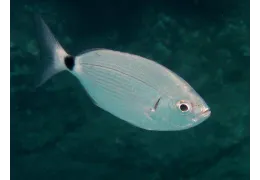
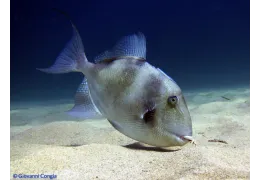
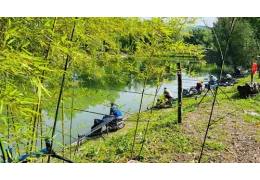
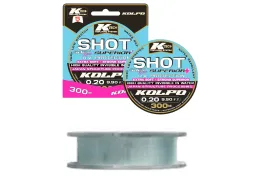
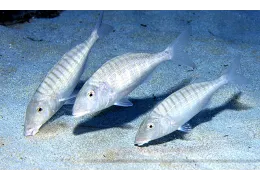
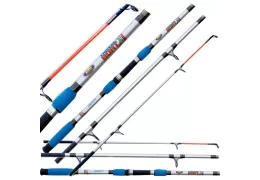
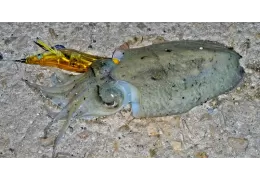
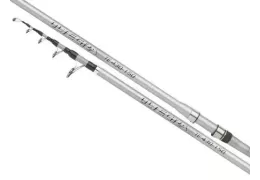
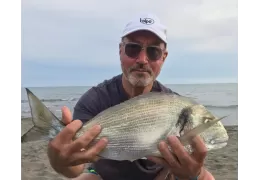


Leave a comment
Log in to post comments